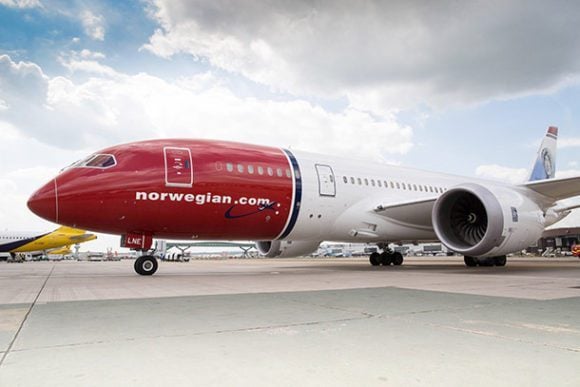
A320neo NAX
Norwegian on October 24 finally revealed its joint venture partner that will help to finance its fleet plans. Norwegian’s wholly-owned subsidiary Artic Aviation Assets has formed a JV with China Construction Bank Leasing International Corporation (CCBLI), itself wholly owned by the world’s #2-bank China Construction Bank Corporation.
The joint venture will be split 30-70 percent in favor of the Chinese partner, who provides most of the capital for Norwegian’s fleet plans. Initially, the JV will purchase 27 Airbus A320neo’s for delivery between 2020 and 2023. These seem additional to the 58 already on order, plus another 30 A321LRs. The joint venture will also provide financing for Norwegian aircraft that will be brought under its wings.
CCBLI was established in 2014 in Hong Kong and moved its activities to Ireland in 2015. It started with a small fleet of 11 leased aircraft worth $760 million but confirmed its intention to grow this to some 200 aircraft around 2020.
Thanks to CCBLI, Norwegian is able to reduce its capital expenditure by $ 1.5 billion and improve its debt position. Norwegian has been looking for a partner – first thought to be a lessor – since early 2018 and on multiple occasions said that a deal was to be expected soon. Acting CEO Geir Karlsen said his airline had worked on the deal for a few months, adding: “This JV is an important first step in building a strong strategic partnership between our two companies.”
Norwegian has been busy restructuring its heavy debts as it shifts its focus from growth to profitability. At the end of September, its interest-bearing debts stood at NOK 61.716 billion.
It successfully refinanced two bonds in September and reduced its liabilities by selling part of its fleet, including two A320neo’s and 7 Boeing 737-800s as well as entering in a sale and leaseback for 4 787-9s. In the first nine months of 2019, debts decreased by NOK 3.144 billion.
The group expects to generate NOK 2.2 billion when completing the sale of all shares in Norwegian Finans Holding in Q4. In Q4 and Q1 2020, the airline will sell another five aircraft with a net liquidity effect of just $50 million.
Fleet deferrals this year and in 2020 will reduce Capex by NOK 22 billion. Norwegian expects to take delivery of 16 MAX 8s next year and 4 787-9s, in addition to 5 787-9s this year. Its fleet will remain stable at 164 aircraft in 2020-2021.
Net profit Q3 up 28 percent
On October 24, Norwegian also announced its Q3 results. Net profit increased 28 percent to NOK 1.670 billion, operating profit 64 percent to 2.969 billion while operating revenues were up 8 percent to NOK 14.404 billion. The airline flew 10.5 million passengers or -3 percent as it had reduced capacity by 3 percent, mainly due to the grounding of its 18 MAX 8s. Norwegian expects the MAX grounding to cost NOK 1 billion this year, up from its previous estimate of 700 million from last October.
Its cost-saving #Focus2019-program generated NOK 827 million of additional savings in Q3 and 1.848 billion during the first nine months. Norwegian’s target for the year is 2.3 billion.
The airline produced a 21 percent revenue growth on its US routes, while also seeing continued high growth in France, Spain, and especially Italy with 21 percent. The new Argentina subsidiary recorded 236 percent revenue growth.
In its guidance, FY19 EBITDAR is expected to be slightly lower than previously stated: NOK 6.1-6.5 billion versus 6-7 billion. At the same time, capital expenditures will also be slightly lower at $1 billion this year (was 1.2) but slightly higher in 2020 to 1.4 billion (was 1.3). Norwegian expects its capacity to be 10 percent lower compared to this year.
Views: 7


